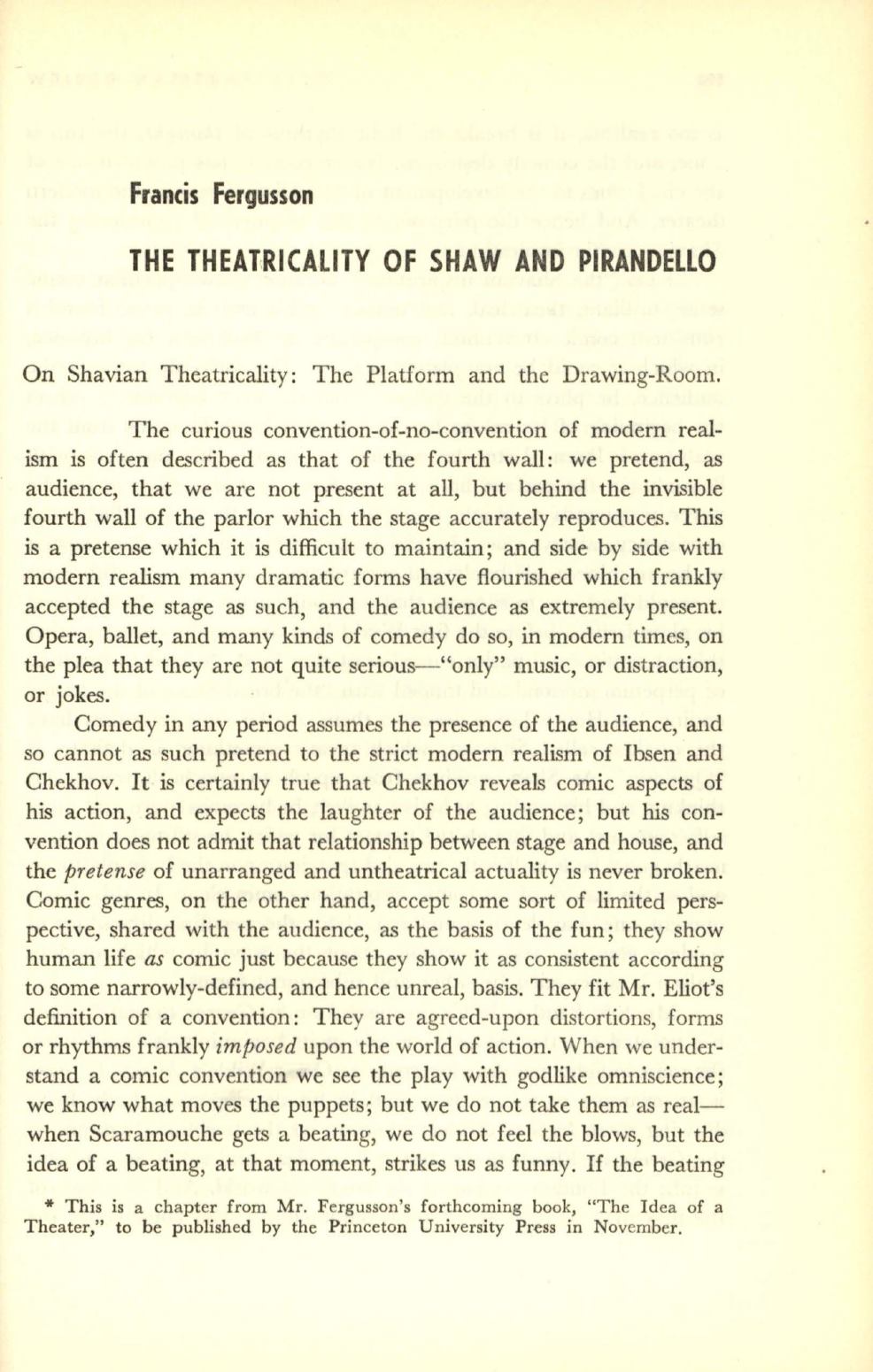
Francis Fergusson
THE THEAT.RICALITY OF SHAW AND PIRANDELLO
On Shavian Theatricality: The Platform and the Drawing-Room.
The curious convention-of-no-convention of modern real–
ism is often described as that of the fourth wall: we pretend, as
audience, that we are not present at all, but behind the invisible
fourth wall of the parlor which the stage accurately reproduces. This
is a pretense which it is difficult to maintain; and side by side with
modern realism many dramatic forms have flourished which frankly
accepted the stage as such, and the audience as extremely present.
Opera, ballet, and many kinds of comedy do so, in modern times, on
the plea that they are not quite serious-"only" music, or distraction,
or jokes.
Comedy in any period assumes the presence of the audience, and
so cannot as such pretend to the strict modern realism of Ibsen and
Chekhov.
It
is certainly true that Chekhov reveals comic aspects of
his action, and expects the laughter of the audience; but his con–
vention does not admit that relationship between stage and house, and
the
pretense
of unarranged and untheatrical actuality is never broken.
Comic genres, on the other hand, accept some sort of limited pers–
pective, shared with the audience, as the basis of the fun; they show
human life
as
comic just because they show it as consistent according
to some narrowly-defined, and hence unreal, basis. They fit Mr. Eliot's
definition of a convention: They are agreed-upon distortions, forms
or rhythms frankly
imposed
upon the world of action. When we under–
stand a comic convention we see the play with godlike omniscience;
we know what moves the puppets; but we do not take them as real–
when Scaramouche gets a beating, we do not feel the blows, but the
idea of a beating, at that moment, strikes us as funny.
If
the beating
*
This is a chapter from Mr. Fergusson's forthcoming book, "The Idea of a
Theater," to be published by the Princeton University Press in November.


